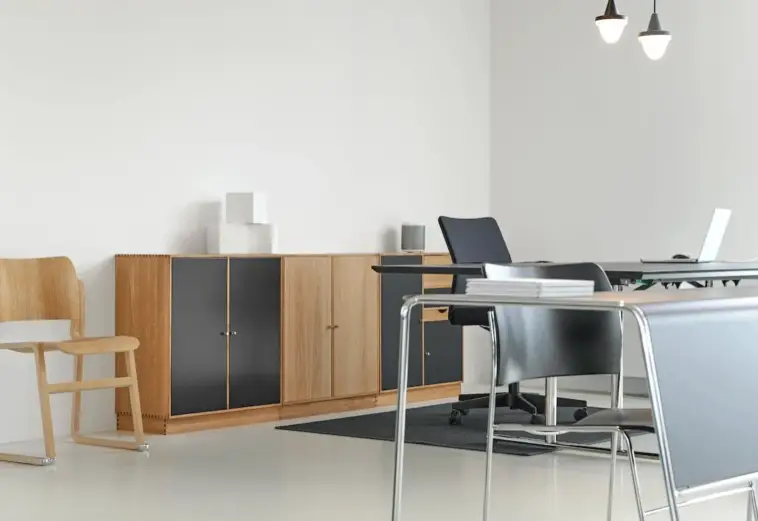The lighting in your office plays a crucial role in creating an environment that is both conducive to productivity and promotes a positive mood. Choosing the right light bulbs for your office is essential to ensure optimal lighting conditions. In this guide, we will explore different types of light bulbs, considerations for office lighting, factors to assess lighting needs, choosing the right light bulbs, energy efficiency, maintenance, and eco-friendly options.
Understanding Different Light Bulb Types
Before diving into the selection process, it’s important to understand the various types of light bulbs available in the market. The most common types include:
- Incandescent bulbs: Traditional, inexpensive bulbs that emit a warm, yellowish light.
- Halogen bulbs: Similar to incandescent bulbs but more energy-efficient and longer-lasting.
- Compact fluorescent lamps (CFLs): Energy-efficient bulbs that provide bright, white light.
- Light-emitting diodes (LEDs): Highly energy-efficient bulbs with long lifespans, offering a range of color temperatures.
Considerations for Office Lighting
When choosing light bulbs for your office, several factors should be taken into consideration:
Color Temperature and Ambiance
Color temperature refers to the appearance of light, ranging from warm (yellowish) to cool (bluish-white). Different color temperatures create varying moods and ambiance. For office spaces, it’s generally recommended to opt for neutral or cool white light (3500K-5000K) as it promotes alertness and focus.
Lumens and Brightness Levels
The brightness of a light bulb is measured in lumens. The appropriate brightness level depends on the tasks performed in each area of the office. For example, workstations may require higher lumens (500-1000) for optimal visibility, while breakout areas may benefit from softer, ambient lighting. For LED bay lights, the required number of lumens varies based on the height and size of the space. According to various sources, for heights of 10-15 feet, you would need approximately 10,000-15,000 lumens, while heights of 15-20 feet would require around 16,000-20,000 lumens. It’s important to ensure that the chosen LED bay lights provide sufficient brightness for the specific application and workspace.
Dimmable Options
Consider incorporating dimmable light bulbs or fixtures into your office. Dimming options allow you to adjust the brightness levels based on specific tasks and individual preferences. Dimmable lighting can enhance comfort, reduce eye strain, and create a more versatile environment.
Color Rendering Index (CRI)
CRI measures how accurately a light source reveals colors compared to natural light. In an office setting, it’s important to choose light bulbs with a high CRI to ensure accurate color representation, particularly for tasks that require color differentiation or evaluation.
Assessing Lighting Needs
To determine the appropriate lighting for your office, assess the purpose of each area:
- Conference rooms: These areas often require bright, evenly distributed light to facilitate presentations and discussions.
- Workstations: Optimal lighting for workstations involves a balance of task lighting (directed light for focused work) and ambient lighting (overall illumination for the area).
- Breakout areas: These spaces should have a cozy ambiance with softer lighting to encourage relaxation and creativity.
Choosing the Right Light Bulbs
When selecting light bulbs for your office, consider the following factors:
Office Size and Layout
The size and layout of your office space will influence the type and number of light bulbs required. Larger spaces may necessitate multiple light sources or fixtures to ensure adequate illumination across the area.
Recommended Light Bulb Types
Based on the considerations mentioned earlier, here are recommended light bulb types for different areas of your office:
- Workstations: LED bulbs with adjustable color temperature and dimmable features provide versatility and energy efficiency.
- Conference rooms: High-quality LED panels or tubes offer even distribution of light and excellent color rendering.
- Breakout areas: Warm white LED bulbs create a cozy atmosphere, ideal for relaxation and socialization.
Dealing with Glare and Eye Strain
To minimize glare and reduce eye strain, consider using light fixtures with diffusers or indirect lighting options. Additionally, positioning light sources away from computer screens and providing task lighting with adjustable angles can significantly improve visual comfort.
Energy Efficiency and Cost Savings
Choosing energy-efficient light bulbs not only reduces environmental impact but also leads to cost savings. Energy-efficient options such as CFLs and LEDs consume less electricity and have longer lifespans compared to traditional incandescent bulbs. Calculate the potential energy savings and return on investment when considering the initial cost of purchasing energy-efficient light bulbs.
Maintenance and Longevity
To maximize the lifespan of your light bulbs, handle them carefully during installation and replacement. Avoid touching the bulb with bare hands as oil residues can lead to reduced efficiency. Regular cleaning of light fixtures and replacing bulbs before they burn out can help maintain optimal lighting conditions in your office.
Eco-Friendly Lighting Options
Incorporating eco-friendly practices into your office lighting can contribute to sustainability efforts. Look for light bulb manufacturers that use sustainable materials, have energy-saving certifications, and offer recycling programs for used bulbs. LED bulbs are a great eco-friendly option due to their energy efficiency and long lifespan. Additionally, consider utilizing natural light through windows or skylights to reduce reliance on artificial lighting during daylight hours.

Choosing the right light bulbs for your office is essential for creating a productive and comfortable work environment. Consider factors such as color temperature, brightness levels, dimmable options, and CRI when selecting light bulbs. Assess the lighting needs of different areas in your office and choose appropriate light bulb types accordingly. Opt for energy-efficient options to reduce both environmental impact and energy costs. By incorporating eco-friendly practices and maintaining your light bulbs properly, you can illuminate your space effectively while being mindful of sustainability.




